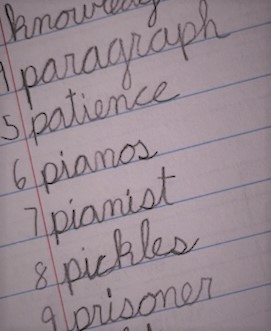- The Classical Academy
- TCA Titan's Blog
The Timeless Skill of Cursive Writing
Posted by Tisha Harris on 3/1/2024
The art of cursive writing may seem like a relic of the past to some people. However, the importance of cursive extends beyond penmanship. Cursive writing is taught at TCA in second grade.
In today's digital age, where typing and texting dominate communication, the art of cursive writing may seem like a relic of the past to some people. However, the importance of children learning cursive extends far beyond mere penmanship. This timeless skill not only fosters a connection to history but also plays an important role in cognitive development, enhancing various aspects of a student's learning journey.
Historical Continuity
Cursive writing is a form of artistic expression that has stood the test of time. Learning this skill provides children with a unique connection to historical documents, enabling them to decipher handwritten letters and documents from the past. By mastering cursive, children gain the ability to read historical artifacts, fostering an appreciation for the evolution of language and communication.
Personal Identity
Cursive writing also carries a personal touch that distinguishes one's identity. A handwritten signature, for instance, is a hallmark of individuality. Encouraging children to learn cursive ensures they can craft their distinctive signatures, contributing to a sense of personal identity and pride in their abilities.
Fine Motor Skills and Hand-Eye Coordination
One of the undeniable benefits of cursive writing is its positive impact on fine motor skills and hand-eye coordination. The intricate loops and curves inherent in cursive letters demand precision and control. As children practice forming these elaborate shapes, they refine their fine motor skills, enhancing their dexterity.
Cursive writing requires a smooth coordination between the hand and the eye. As children engage in the fluid movements required to connect cursive letters, they develop a heightened sense of spatial awareness and refine their hand-eye coordination. These foundational skills are crucial for future academic pursuits and everyday tasks.
Enhanced Reading and Academic Proficiency
Studies have shown a positive correlation between cursive writing and improved reading skills. The rhythmic flow of cursive letters aids in the development of letter recognition and retention. When children practice connecting letters in cursive, it reinforces their understanding of letter sequences, leading to increased reading fluency.
Furthermore, the act of writing in cursive engages different parts of the brain compared to typing or printing. This unique cognitive engagement has been linked to improved information processing and retention. As children navigate the intricacies of cursive, they stimulate brain regions associated with language and memory, laying a robust foundation for academic success.
Boosting Creativity and Self-Expression
Beyond the confines of standardized testing and structured curricula, cursive writing provides an avenue for self-expression. It is, in some respects, an art form. Encouraging children to experiment with different styles of cursive enhances their creative abilities.
Children can use cursive to bring their thoughts and ideas to life, creating a tangible representation of their unique voice. The freedom to infuse personal flair into their writing fosters a sense of ownership and pride in their work. This not only boosts confidence but also nurtures a lifelong appreciation for the art of written expression.
Encouraging Patience and Perseverance
Learning cursive is a journey that requires patience and perseverance. The intricacies of mastering each cursive letter and connecting them into words demand practice and dedication. In an era of instant gratification, instilling the value of persistence through cursive writing is a valuable life lesson.
As children navigate the challenges of learning cursive, they develop resilience in the face of difficulties. Overcoming the initial hurdles of forming unfamiliar shapes instills a sense of accomplishment, reinforcing the idea that perseverance leads to mastery. These lessons extend beyond the realm of writing, shaping a mindset that embraces challenges with confidence.
Embracing the Timeless Craft
The importance of children learning cursive writing extends well beyond the confines of traditional penmanship. It is a gateway to historical continuity, a catalyst for cognitive development, and a canvas for self-expression. Encouraging children to embrace the timeless craft of cursive not only equips them with essential skills but also encourages a love for the art of writing that will accompany them throughout their academic careers and beyond.
We’re always here to help our TCA parents. If you need more information, please don’t hesitate to contact us at 719-484-0091.


